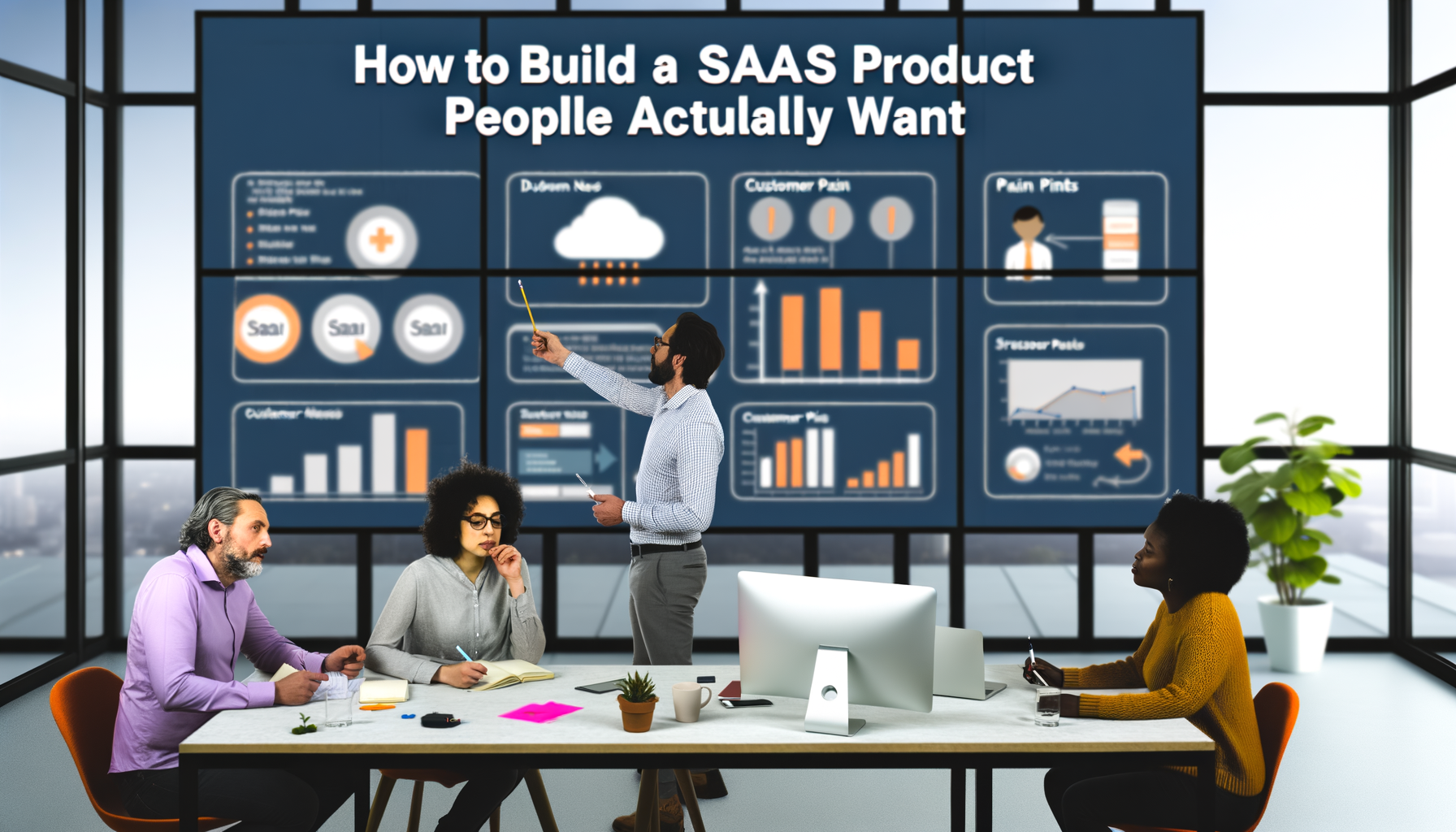
How to Build a SaaS Product People Actually Want
Understanding Customer Needs in SaaS Product Development
Every entrepreneur dreams of creating a SaaS product that grips the market — the type of solution that people talk about at dinner tables, one that customers absolutely can’t live without. But the reality is, many SaaS products falter before they even begin. The key to success lies in one critical understanding: building a product that people actually want. This blog post dives into the strategic process of pinpointing user needs and translating them into successful SaaS product development.
Recognizing Real Customer Pain Points
Every successful SaaS strategy begins with a deep comprehension of the user’s pain points. It’s not enough to have a rough idea; one must empathize with the struggles that prospective users face. Market research is your friend in this venture. Start with qualitative research like customer interviews and surveys that delve into users’ day-to-day challenges. Complement this with quantitative data analysis from existing products and industries.
For instance, during my early entrepreneurial days, I learned the significance of listening — really listening — to the customer. I realized that customers often voice frustrations that can unlock pivotal insights. Remember, the most groundbreaking solutions emerge from the biggest frustrations.
Validating Your SaaS Ideas
Walking into SaaS product development without validation is like sailing without a compass. To verify that your ideas resonate with user needs, construct a framework for validation. One effective approach is building a Minimum Viable Product (MVP). An MVP allows you to test your hypothesis with minimal resources, focusing only on core functionalities that address the core issues faced by your customers.
Before launching the MVP, present mock-ups or wireframes to your target audience for feedback. This stage offers invaluable insights, enabling you to refine your concept and ensure greater alignment with user expectations. Remember, constructive criticism early on can save a plethora of headaches post-launch.
Developing Features Based on Customer Feedback
Upon validating your product concept, the real journey begins: developing features that cater to real customer stories. Align your product roadmap trajectory with feedback collected from your MVP testing phase. Prioritize feature development — aligning with the most pressing needs as identified by user feedback.
For instance, the feedback loop is quintessential. Cultivate relationships with early adopters and incentivize them to share their experiences continuously. This not only raises the bar of accuracy in improvements but also strengthens customer loyalty. In cases where feedback reveals unexpected feature desires, be flexible. Pivoting or adjusting your roadmap based on strong patterns is a sign of a reactive and mature product strategy.
Measuring Product-Market Fit
Believe it or not, product-market fit is not an enigma. It’s measurable, and tracking the right metrics can illuminate it. Keep a close eye on user engagement levels, acquisition rates, and churn statistics. If users find your product indispensable, they’ll likely become long-term customers.
Net Promoter Score (NPS) serves as a wonderful metric; high scores indicate that users are not only content but willing to recommend your service. But even better than numbers are heartfelt testimonials. Customer stories of success create a vivid portrayal of product-market fit.
Nurturing an Agile Mindset in SaaS Development
The SaaS landscape is dynamic, and adaptability becomes a cornerstone philosophy of successful product teams. By adopting an agile methodology, you can gracefully navigate the twists and turns that arise post-launch. Regular sprints enable continuous improvement and allow you to adapt to consumer feedback swiftly.
I’ve discovered firsthand that fostering a culture of innovation within your team amplifies this mindset. Encourage your team to brainstorm freely and challenge assumptions. This keeps the dream of creating a coveted SaaS solution alive and thriving, igniting enthusiasm across the board.
Conclusion
Successfully launching a SaaS product that fulfills user needs isn’t just about having a breakthrough idea; it’s about a disciplined focus on understanding and addressing real customer problems. My journey has shown that true innovation isn’t about adding endless features; it’s about stripping down a product to its core value and iterating based on real-world feedback. I invite you to stay connected, as we explore deeper mystical grounds of entrepreneurship, fundraising, and innovation. Together, we can cultivate solutions that users not only want — but enthusiastically endorse.
Looking for more insights? Connect with me and explore Foundercrate’s resources tailored to aspiring SaaS builders and tech enthusiasts.
